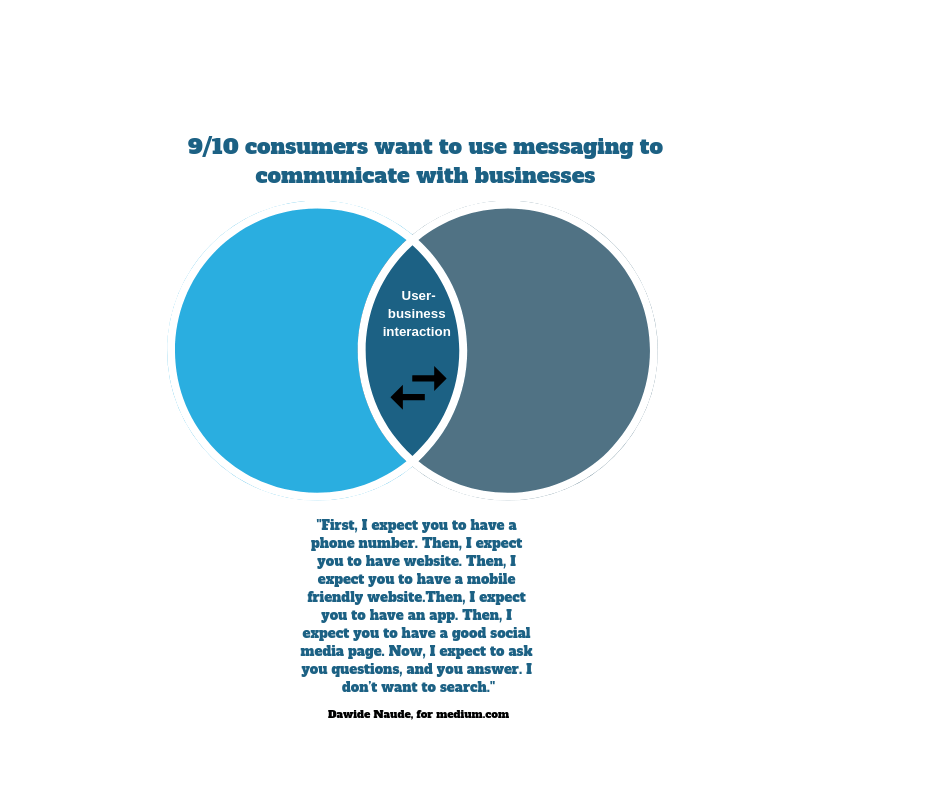How chatbots will transform customer experience
It’s no surprise that in 2018, texting is the number one preferred channel for customer service. According to Twilio, 89% of consumers prefer to use messaging to stay in touch with businesses. They also want more than just one-way communication: they want engagement and fast replies. That’s where chatbots come in. As Becky Peterson from Business Insider stated, “Over the next few years, chat bots will become a ubiquitous component of the customer service experience.”
Chatbots are changing the way companies operate by delivering smart solutions to customer service staff. Virtual assistants like Siri, Amazon’s Alexa and OK Google are all AI products ready to provide support whether we are talking about B2C customer service or sales and marketing. Big corporations like Nordea Bank, Domino’s, Pizza Hut, and Whole Foods have already launched their own chatbots to improve customer satisfaction. HR managers are also slowly starting to use it for employee retention, onboarding help and organizational structure. It also works the opposite way- Mila, overstock.com`s chatbot is just an example of a chatbot designed to assist employees when taking sick leave or vacations.
So, does your company need a chatbot ? Isn’t it enough to have a responsive website, a social presence, a phone and email support ? Probably, but in order to become a digital leader, staying in touch with technology progress and implementing new features is always a good idea. Waiting for an email to be answered and reaching out to people in traditional manners is slowly becoming old fashioned- more and more businesses approach the so called: ‘’hyper-customization’’ model in which they send personalized offers. It’s a great way of achieving customer satisfaction by showing people you care about their wants and needs.
According to Gartner’s report, 85% of customer-business communication will be managed without a human by 2020. Although AI already started to replace some human tasks, in the future technological advance will lead to automation- no more need to source leads, find contact details, write and answer emails, or even provide phone customer support. Companies that used to have an entire customer support department will no longer need it. A customer service audio chatbot that sounds entirely human will answer any possible question. Here are five ways in which chatbots can change your business for the bette
24/7 customer service support
A real person might need some time to rest, but a chatbot doesn’t. Besides that, who wants to wait ? People nowadays have a very short attention span and less time to spend on fixing things, however their expectations regarding support quality increase day by day. Which is why chatbots are a good way of pleasing both customers and the business itself by delivering a high standard service and cutting costs.
A smooth, pleasant user experience
Its all about service design thinking in 2018 and staying up to date with the latest technologies can only make your customers feel that your business is providing hard to match modern, high quality services.
Operational cost-optimization
A sales person needs to be paid. But your new chatbot doesnt. Besides that, the query handling capabilities that can accept and process hundreds of requests in one go are hard to beat. One good example is a chatbot created with IBM Watson – it can process 500 gigabytes of data which would equal a million books. As the CEO of Drift states, “A brand shouldn’t try to build a human-like chatbot- a great chatbot should be able to take actions that maximize their chances of success toward achieving particular goals.”
Customer retention
Your business ROI highly depends on the way you manage to keep customers on your pages and make them happy. As long as your chatbot is infused with the desired intelligence, your profit margin can only increase.
Personalized experience
People love personalized experiences because it makes them feel valued and connected to a brand or service. Luckily, chatbots are a great way of providing that, thus creating a better engagement that drives customer aquisition.
